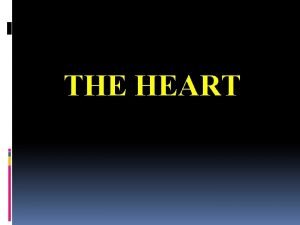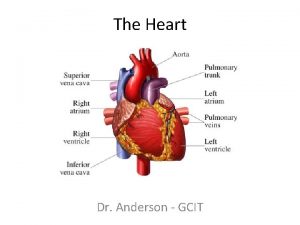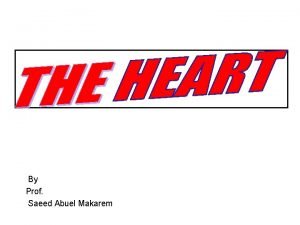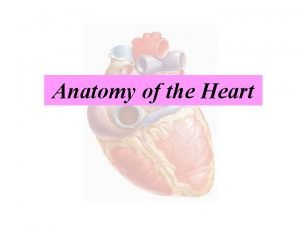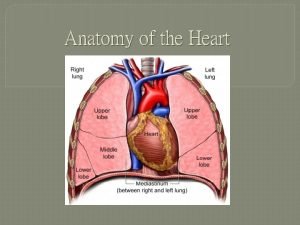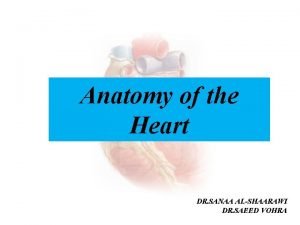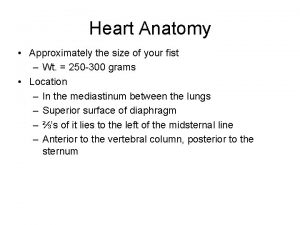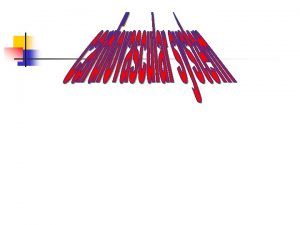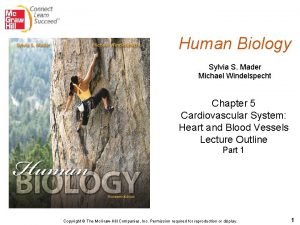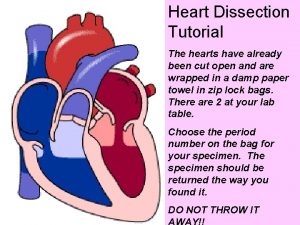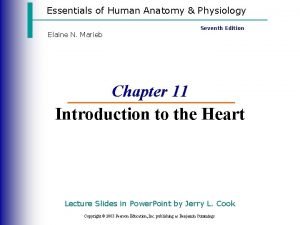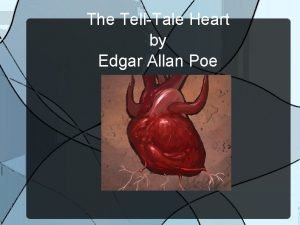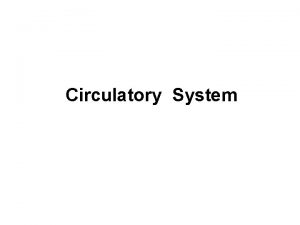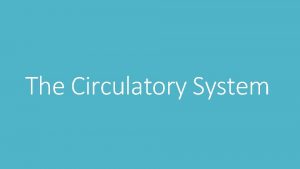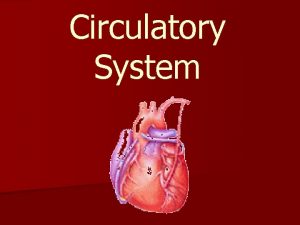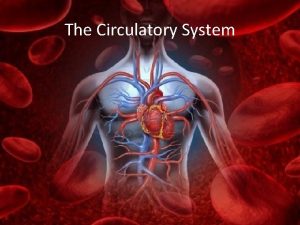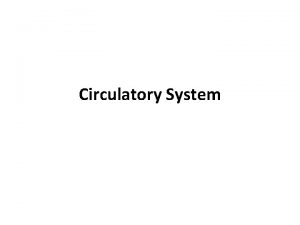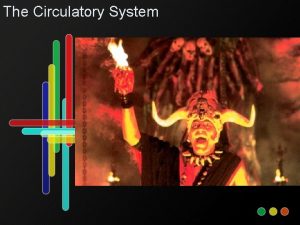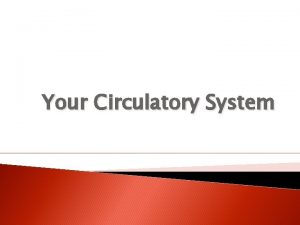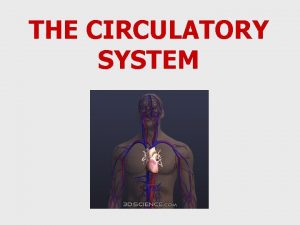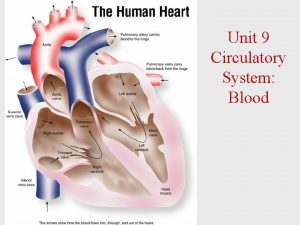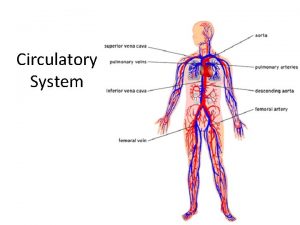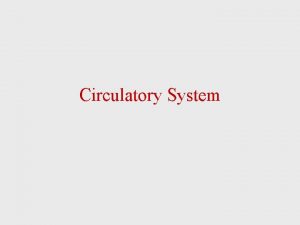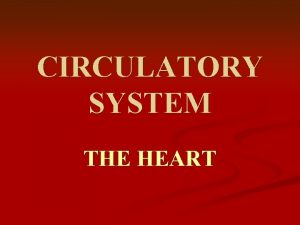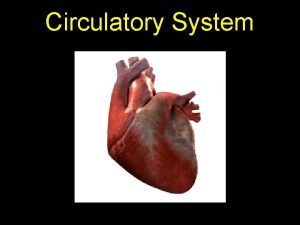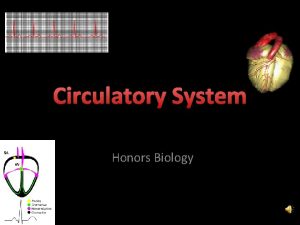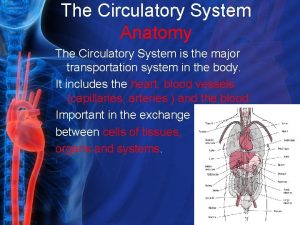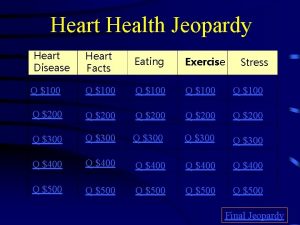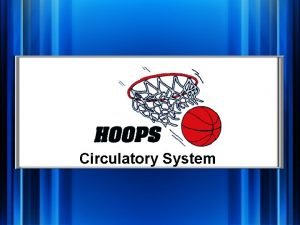Circulatory System Heart Anatomy Circulatory System Facts q




















- Slides: 20

Circulatory System Heart Anatomy

Circulatory System Facts: q. AKA cardiovascular system or CV system q. Transportation system of the body q. Transports O 2 & nutrients to cells; CO 2 & metabolic materials away from cells q. Structures include the heart, blood vessels, and blood

Heart: q. Muscular, hollow organ q“Pump” of the body q. Weighs <l pound, size of a closed fist q. Located in the mediastinal cavity (between the lungs, behind sternum, & above diaphragm)

3 layers of tissue form the heart: �Endocardium �Myocardium �Pericardium

1. Endocardium – �smooth layer of cells �lines inside of the heart and is continuous with inside of the blood vessels �allows for smooth flow of blood.

2. Myocardium – muscular middle layer

3. Pericardium – double layered membrane or sac that covers outside of the heart filled with pericardial fluid

Pericardial fluid (lubricating fluid) �fills the space between the 2 layers �prevents friction & damage to the membranes as the heart contracts

4 Chambers of the heart: 1. 2 upper chambers=atria/atrium 2. 2 lower chambers=ventricles

Right Sided Chambers of the heart – v. Right Atrium (RA)– receives deoxygenated blood as it returns from the body cells v. Right Ventricle (RV)– receives blood from RA & pumps it into pulmonary artery to be carried to the lungs for O 2

Left Sided Chambers of the heart – v. Left Atrium (LA)– receives oxygenated blood from the lungs v. Left Ventricle (LV)– receives blood from LA & pumps it into aorta for transport to body cells

Septum Muscular wall that separates heart into R and L sides o It prevents blood from moving between R and L sides o

Septum o Upper part – interatrial septum o Lower part – interventricular septum

4 Valves- One way valves keep the blood flowing in the right direction 2 Types of valves: Atrioventricular (AV) and Semilunar

2 AV Valves – (Separate atria & ventricles) �Tricuspid �Bicuspid (Mitral)

v. Tricuspid , AV Valves – valve – between RA and RV, closes when RV contracts v. Allows blood to flow to lungs & prevents it from flowing back into RA

AV Valves – v. Bicuspid (Mitral) Valve – between LA and LV, closes when LV contracts v. Allows blood to flow into aorta & prevents it from flowing back into LA

2 Semilunar Valves– �Pulmonary �Aortic

Semilunar Valves – v. Pulmonary semilunar valve – between RV and pulmonary artery, closes when RV has finished contracting v. Allow blood to flow into pulmonary artery & prevents blood from flowing back into RV

Semilunar Valves – v. Aortic Semilunar Valve – between LV and aorta, closes when LV has finished contracting v. Allows blood to flow into aorta & prevents blood from flowing back into LV
 Site:slidetodoc.com
Site:slidetodoc.com Tiny air sacs at the end of the bronchioles
Tiny air sacs at the end of the bronchioles Circulatory system and respiratory system work together
Circulatory system and respiratory system work together Layers of the heart
Layers of the heart Reinforcement: heart anatomy
Reinforcement: heart anatomy Superior vena cava pig heart
Superior vena cava pig heart Heart surface anatomy
Heart surface anatomy Dorsal and ventral side
Dorsal and ventral side Inferior border of the heart
Inferior border of the heart Base of the heart
Base of the heart Correctly label the following major systemic arteries
Correctly label the following major systemic arteries Vestibule
Vestibule Anterior interventricular
Anterior interventricular Gross anatomy of heart
Gross anatomy of heart Applied anatomy of heart
Applied anatomy of heart Internal anatomy of the heart
Internal anatomy of the heart Sheep heart anatomy
Sheep heart anatomy Cardiac anatomy
Cardiac anatomy Cardiac dullness
Cardiac dullness Hrt 2 hrt
Hrt 2 hrt A summary of the tell tale heart
A summary of the tell tale heart



